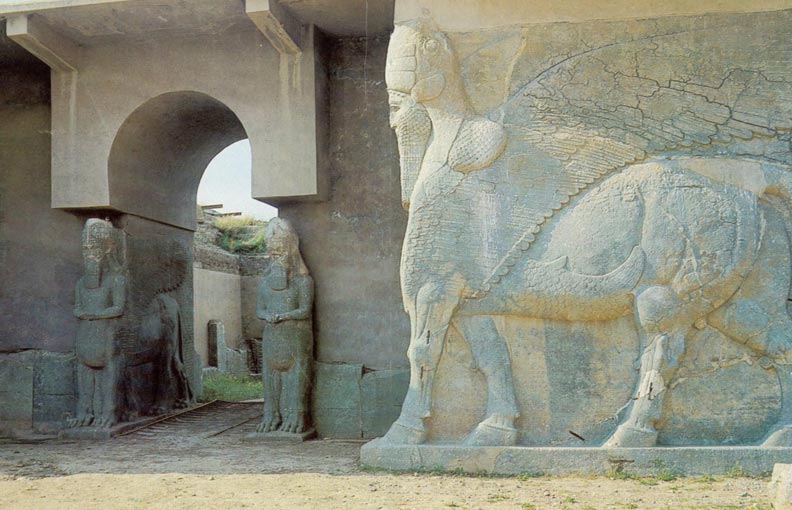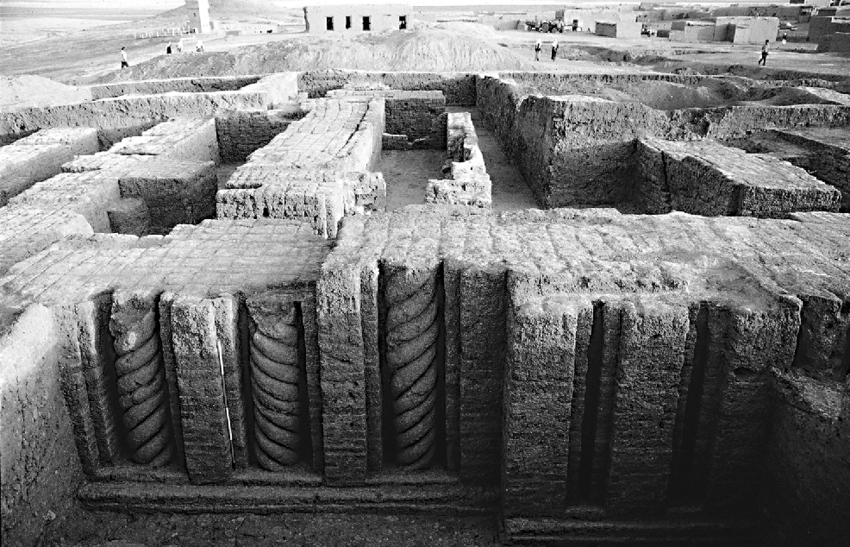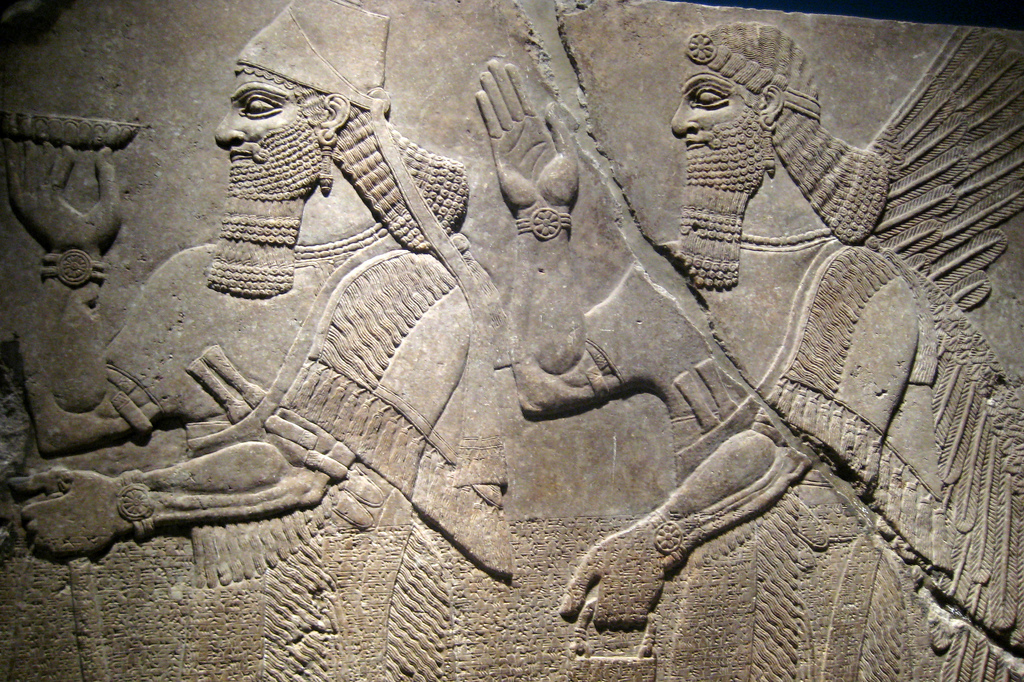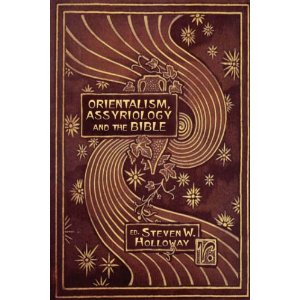- Latest Archaeology Updates
- Importance and applicability
- Famous Archaeologists
- Museums Collections
- Site Map
- World Heritage Sites
- World History Monuments
- Archaeological Organizations
- World Atlas of Archaeology
- Forensic Investigation and Geophysics
- Contact Us
- Movies based on Archaeology
- Frequently Asked Questions
- Archaeological discoveries
- Tell a Friend
- Archaeological Abbreviations
- Gallery Collections
- Famous-Museums site map
- Famous-archaeologists site map
- Archaeological Monuments site map
Assyriology is the academic field devoted to the study of the ancient Assyrian civilization, which flourished in the Middle East from roughly 2000 BCE to 539 BCE. It encompasses the study of the language, literature, art, history and archaeology of the Assyrian Empire and its impact on the region and the world. Assyriology focuses primarily on the cuneiform writing system used by the Assyrians. This system was used for many centuries and was adapted by many other cultures in the Near East, including the Babylonians, Sumerians and Hittites. Texts written in cuneiform have been discovered that provide insight into the lives and culture of the Assyrian people, from legal codes to religious rituals to literature.
Assyriology also examines the archaeological remains of the Assyrian civilization. Excavations of Assyrian cities, such as Nineveh, Nimrud and Ashur, have uncovered a wealth of artifacts, including stone sculptures and reliefs, metalwork, pottery, and other objects that provide insight into Assyrian art and architecture. The history of the Assyrian Empire is also studied in depth. Assyriologists examine the interactions between the Assyrians and their neighbors, as well as the political, economic and religious developments in the region during this time. Assyriology has been an important part of the study of the ancient Near East for many years, and continues to be an important field of study today. By investigating the Assyrian culture and its legacy, Assyriologists can gain a better understanding of the history of the ancient Near East, as well as its present-day implications..
History of the Assyriology field
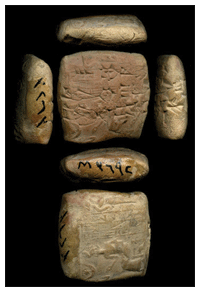
The first systematic exploration of the ancient Assyrian civilization began in 1820 with the publication of a French translation of the Akkadian cuneiform tablets found in the ruins of Nineveh, which had been destroyed centuries before. This marked the beginning of the field of Assyriology and the start of the decipherment of the Akkadian language. In the 1830s, scholars began to make further progress in the study of Assyrian culture. The first major breakthrough came in 1857 when Henry Creswicke Rawlinson deciphered the Behistun Inscription and was able to read the ancient language. This enabled scholars to begin to read and understand ancient texts and was the first major breakthrough in the field.
In the late 19th century and early 20th century, the field of Assyriology flourished as archaeologists, philologists, and historians began to explore and study the ancient culture. This included excavations in places such as Nimrud, Nineveh, and Assur. In the late 20th and early 21st centuries, Assyriology continued to be studied by scholars from a variety of disciplines. Major advances in the field were made through the use of computers to analyze texts, the use of multilingual sources, and the use of sophisticated archaeological techniques.
Technology in Ancient Assyria
- Ancient Assyria was one of the earliest civilizations to develop in Mesopotamia. It was a powerful empire that spanned from the Mediterranean Sea to the Persian Gulf. Assyrians are credited with making remarkable advancements in technology, particularly in construction, engineering, irrigation, and warfare.
- In terms of construction, the Assyrians were experts in the field. They developed brick and stone buildings, bridges, dams, and canals. They used a form of cement called bitumen to construct strong buildings that were resistant to the elements. They created a large canal system for irrigation and transportation, which allowed them to build vast networks of cities and roads.
- The Assyrians also excelled in engineering and construction. They used stone and brick to build durable and impressive palaces, temples, and fortresses. They also developed techniques for building roads and bridges, and they employed complex engineering techniques for lifting water from rivers.
- The Assyrians also made great advancements in irrigation. They used dams and canals to channel water from the Tigris and Euphrates rivers, which allowed them to create fertile land for farming. This enabled them to cultivate a wide variety of crops, including wheat, barley, and other grains.
- In terms of warfare, the Assyrians were unmatched. They were renowned for their ferocity in battle and their use of advanced tactics and technology. They developed powerful weapons such as the composite bow and the chariot. They also employed a variety of siege engines, such as battering rams and catapults.
- The Assyrians also had a sophisticated system of communication. They used couriers to send messages quickly throughout their empire. They also used beacons to send signals over great distances. Finally, they developed a complex system of writing, which allowed them to record their laws, achievements, and victories.
- Overall, the Assyrians were one of the most advanced civilizations of their time. They developed a variety of technologies and innovations, which allowed them to become a powerful empire that spanned from the Mediterranean Sea to the Persian Gulf. Their advancements in construction, engineering, irrigation, and warfare enabled them to create one of the most powerful empires of the ancient world.
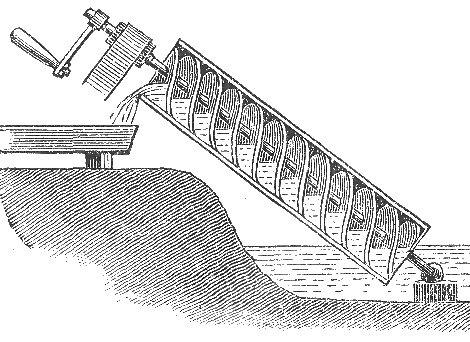
The Legacy of Assyrian Culture
- Assyrian art and architecture: The Assyrians left behind a legacy of grand monuments and palaces, detailed sculpture and reliefs, and beautiful illuminated manuscripts.
- Assyrian language: The Assyrians left behind a language that is still spoken today, as well as a written language that is the basis of many modern languages.
- Assyrian literature: The Assyrians left behind a body of literature, including epic poems, royal inscriptions, legal documents, and religious texts.
- Assyrian religion: The Assyrians left behind a religion that had a major influence on Judaism and Christianity, including the concept of monotheism.
- Assyrian military: The Assyrians left behind an impressive legacy of military might, which laid the foundation for military tactics and strategies still used today.
- Assyrian law:The Assyrians left behind a system of laws that was used for centuries by other civilizations and is still studied by legal scholars today.
- Assyrian science and technology:The Assyrians were ahead of their time in terms of science and technology, with achievements in engineering, metallurgy, and medicine.
Recent Discoveries Of Assyriology
The Early Dynastic Royal Tombs of Ur
In 2020, archaeologists from the UK and Iraq excavated a series of royal tombs at the ancient city of Ur, thought to date back to the Early Dynastic period (c. 2500-2350 BCE). The tombs contained a wealth of artifacts, including jewelry, pottery, and seals, as well as the remains of the individuals buried within, providing insights into the culture and burial practices of the period.
The most famous artifacts from the Royal Tombs of Ur are the so-called "Standard of Ur." This object is a wooden box with mosaics on its sides, depicting scenes of warfare and peace. The Standard of Ur is thought to represent the victory of King Mesannepada of Ur over the neighboring city of Umma.The Royal Tombs of Ur provide a window into the life and culture of the people of the Early Dynastic period in Mesopotamia. Through the artifacts found in the tombs, we can learn about the social structure of the society, the economy, and the religious beliefs of the people. The Royal Tombs of Ur have also helped to shed light on the origins of writing and literature in Mesopotamia.
The Discovery of a Lion's Gate at the Assyrian City of Nimrud:
In 2019, archaeologists discovered a large and elaborately decorated Lion's Gate at the ancient Assyrian city of Nimrud. The gate is thought to have been built during the reign of King Ashurnasirpal II (883-859 BCE) and is decorated with reliefs of winged lions, a symbol of power and protection in Assyrian culture.
The gate is decorated with a pair of lamassu, or winged lion-human hybrids, which were believed to be protective spirits in ancient Assyrian culture. The gate is also adorned with intricate carvings of a crescent moon and a sun disc, symbols of the Mesopotamian gods Sin and Shamash, which were popular in Assyrian art.
The discovery of the Lion's Gate is a major development in the study of ancient Assyrian culture, as it reinforces the notion that Nimrud was an important city in the Assyrian Empire. It also serves as a reminder of the rich cultural and architectural legacy of the region and the importance of preserving such sites for future generations. The gate will now be carefully restored and opened to the public, allowing visitors to gain a better appreciation of the city's history and culture.
The Unearthing of a Bronze Age Palace at Tell Leila
The Unearthing of a Bronze Age Palace at Tell Leilan was an important archaeological discovery in the region of Syria. The palace was discovered in the late 1980s by a team of archaeologists from the University of Chicago and the Oriental Institute. The palace, which was dated to around 1750 BC, consists of several large rooms and courtyards and is believed to have been a part of the urban center of the ancient city-state of Shubat-Enlil.
The palace is thought to have been a major administrative center for the city-state, with evidence suggesting that it was home to both a central administrative office and a treasury. The palace also contained a number of artifacts, including pottery, jewelry, and weapons, which helped to shed some light on the culture and lifestyle of the ancient city-state. The discovery of the palace at Tell Leilan has provided important new insights into the history of the region and has helped to reveal the sophistication of the urban centers of the Bronze Age.
The Discovery of a Cuneiform Tablet in Thebes:
In 1825, a French antiquarian named Edouard Naville discovered a cuneiform tablet in Thebes, Egypt. The tablet, written in the ancient Akkadian language, dates back to the 16th century BC and is believed to be part of a library of clay tablets dating back to the reign of Ramses III.
The tablet contains a number of inscriptions, including a list of vessels and their cargo, as well as a description of an expedition down the Nile. It is believed to have been part of a larger archive of documents from the time. The discovery of the tablet provided invaluable insight into the ancient Egyptian culture, as it contained details about the economy, trade, and social life of the period. It also provided evidence of the use of cuneiform writing in Egypt during the period, which is not widely known. The tablet is now housed in the Louvre museum in Paris.
The Rise and Fall of the Assyrian Empire
The Assyrian Empire was one of the most powerful ancient empires in the world. It was located in the Middle East and was the dominant power in the region for centuries. The Assyrian Empire was founded in the 24th century B.C. and lasted until the 6th century B.C. The Assyrians were a Semitic people and their language, Akkadian, was one of the first written languages in the world.
The Assyrians were a powerful militaristic people and their empire was larger than any other at the time. The Assyrian Empire was centered in the city of Assur, which was located in what is now northern Iraq. The Assyrians had a strong military and were known for their advanced siege warfare tactics. They built a vast network of roads and fortifications to protect their empire.
The Assyrians were also known for their advancement in the arts and sciences. They were great builders and architects, and they developed a system of writing which was used throughout the empire. They also created libraries and schools to promote knowledge and learning. .
The Assyrian Empire reached its height of power in the 7th century B.C. under the rule of King Sargon II. He conquered vast lands and expanded the empire to its greatest extent. However, by the 6th century B.C., the empire began to decline due to internal strife, civil war, and foreign invasions. The final blow came in 612 B.C. when the Babylonians sacked the city of Assur and destroyed the Assyrian Empire.
Despite its fall, the Assyrian Empire left a lasting legacy. Its accomplishments in art, science, and engineering still influence the world today. The Assyrians are also remembered for their remarkable military achievements, which earned them a reputation as one of the most powerful ancient civilizations.
Universities that offer Assyriology
Assyriology is a branch of ancient Near Eastern studies that is focused on the study of the ancient civilization of Assyria. It focuses on the language, history, culture, and archaeology of this civilization. The ancient Assyrian civilization was one of the most powerful and influential of its time, dominating the region from the 10th century BC to the 7th century BC. This civilization was a major force in the Ancient Near East, and its history and culture have had an enormous impact on the region. Assyriology provides students with the opportunity to learn about this ancient civilization and its impact on the world today. At present, there are a number of universities that offer courses in Assyriology. The University of Oxford, for example, has a programme of study in Assyriology that includes courses on the language, literature, history, archaeology, and art of the ancient Assyrian civilization.
The University of Cambridge also offers a programme of study in Assyriology, which includes courses on the history, literature, archaeology, and art of the ancient Assyrian civilization. Other universities that offer courses in Assyriology include the University of Chicago, the University of Michigan, Harvard University, the University of California, Los Angeles, and the University of Pennsylvania. All of these universities provide students with the opportunity to learn about the ancient Assyrian civilization and its impact on the world today. In addition to these universities, there are also a number of other institutions that offer courses in Assyriology. These include the Oriental Institute at the University of Chicago, the Institute for the Study of the Ancient World at New York University, and the Institute for Ancient Near Eastern Studies at the University of California, Los Angeles. These institutions provide students with the chance to gain a deeper understanding of the ancient Assyrian civilization and its impact on the world today. In conclusion, there are a number of universities and other institutions that offer courses in Assyriology. These courses provide students with the opportunity to learn about the language, literature, history, archaeology, and art of the ancient Assyrian civilization, as well as its impact on the world today.
Books on the Assyriology:
Assyriology is the study of the ancient civilization of Assyria, which flourished in the Middle East from the 25th century BCE to the late 7th century CE. Assyriology is a highly interdisciplinary field that draws on knowledge from multiple sources, including archaeological evidence, cuneiform texts, and the writings of ancient historians. Popular books on Assyriology include The Ancient Near East: Historical Sources in Translation by Mark Chavalas, Ancient Mesopotamia: The Eden That Never Was by Gwendolyn Leick, and Assyrians: People of the Ancient Near East by Geoffrey Kane. These books provide an introduction to the region, its history and culture, its religion and literature, and its major archaeological sites. Other titles, such as The Ancient Assyrians by Karen Radner and The Oxford Handbook of Cuneiform Culture by K. Radner and M. W. Chavalas, focus on specific aspects of Assyriology such as cuneiform studies and Assyrian culture.
Other Resource about Assyriology:
Assyriology in Wiki:
Assyriology is the study of the culture, history, and language of the ancient Assyrians, a people who inhabited the area of Mesopotamia in the Near East during the Bronze Age. It includes the study of the Akkadian, Sumerian, and related languages, as well as the material culture, archaeology, and history of the ancient Assyrians. Assyriology is part of the larger field of Near Eastern Studies, which encompasses the study of the ancient Near East.
-
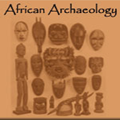
African Archaeology is the study of the history and prehistory of the African continent, as well as its societies and cultures, through the use of archaeological evidence. African Archaeology covers a broad range of topics, from the Stone Age to the present day. -
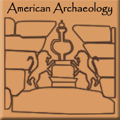 American Archaeology also known as New World archaeology, is the study of the archaeological history and prehistory of the Americas. It is a subfield of archaeology, the study of the human past, which seeks to understand societies and cultures by examining their material culture, such as artifacts and ruins.
American Archaeology also known as New World archaeology, is the study of the archaeological history and prehistory of the Americas. It is a subfield of archaeology, the study of the human past, which seeks to understand societies and cultures by examining their material culture, such as artifacts and ruins. -
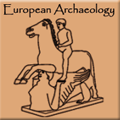 European Archaeology European archaeology is the scientific study of the material remains of past cultures and societies in Europe, from the Paleolithic period to the present day. It is an interdisciplinary field which draws on the methods and theories of a range of disciplines, including history, anthropology, art history, geography, geology and linguistics.
European Archaeology European archaeology is the scientific study of the material remains of past cultures and societies in Europe, from the Paleolithic period to the present day. It is an interdisciplinary field which draws on the methods and theories of a range of disciplines, including history, anthropology, art history, geography, geology and linguistics. -
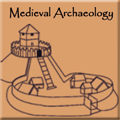 Medival archaeology Medieval archaeology is a field of archaeology that is primarily concerned with the material remains of the Middle Ages, which is roughly defined as the period from the 5th to the 15th century.
Medival archaeology Medieval archaeology is a field of archaeology that is primarily concerned with the material remains of the Middle Ages, which is roughly defined as the period from the 5th to the 15th century. -
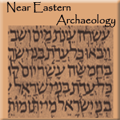 Near Eastern Archaeology Near Eastern Archaeology is the study of the material culture found in the Near East, a region of Eurasia that covers the Middle East, North Africa, and parts of Central Asia. The region is often referred to as the cradle of civilization, as it is the site of some of the earliest known civilizations, including the Sumerian, Babylonian, and Assyrian empires.
Near Eastern Archaeology Near Eastern Archaeology is the study of the material culture found in the Near East, a region of Eurasia that covers the Middle East, North Africa, and parts of Central Asia. The region is often referred to as the cradle of civilization, as it is the site of some of the earliest known civilizations, including the Sumerian, Babylonian, and Assyrian empires. -
 Post Medieval Archaeology Post-medieval archaeology is the study of the period from the 15th century to the 19th century. It is a period of great change and transformation, with the rise of nation states, the onset of industrialization and the spread of global trade. Archaeological evidence from this period reflects the development of these changes and the impact they had on everyday life.
Post Medieval Archaeology Post-medieval archaeology is the study of the period from the 15th century to the 19th century. It is a period of great change and transformation, with the rise of nation states, the onset of industrialization and the spread of global trade. Archaeological evidence from this period reflects the development of these changes and the impact they had on everyday life. -
 Modern Archaeology Modern archaeology is the study of human activity in the past using the material remains of a culture. It is a subfield of anthropology that includes the study of artifacts, architecture, landscapes, and cultural landscapes. It is a scientific approach to the study of past cultures and societies, and often involves excavation, laboratory analysis, and other research methods
Modern Archaeology Modern archaeology is the study of human activity in the past using the material remains of a culture. It is a subfield of anthropology that includes the study of artifacts, architecture, landscapes, and cultural landscapes. It is a scientific approach to the study of past cultures and societies, and often involves excavation, laboratory analysis, and other research methods


